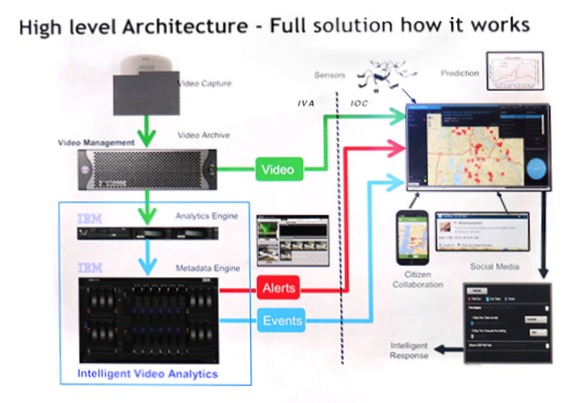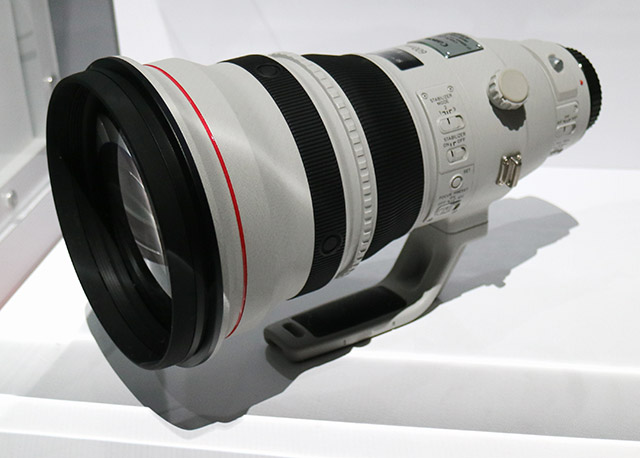Canon’s incredible Expo 2015: Amazing technology, but where’s photography going?
posted Monday, September 14, 2015 at 3:54 PM EST

Every five years, Canon puts on a single-company trade show they call the Canon Expo. This year's was the third I'd attended, and it's incredible to see the growth and development that's taken place in the ten years since my first.
A look back at Canon Expo 2005
To give you some idea of how much things have changed, among the technologies that were featured in Canon Expo 2005 were a WiFi-equipped PowerShot, and a fast (compared to what had been seen thus far) face tracking and smile detection algorithm. Once bleeding-edge, these capabilities are now entirely commonplace.
It's also interesting to see technologies that were demonstrated there that never made it to the real world as products, including a battery-replacing fuel cell and a gorgeous display technology called SED. They also had a demo of OLED display technology back then, a technology that still seems to be struggling to displace LCDs.
Photography is just the tip of the iceberg
Canon Expo 2005 was all about photography or very closely-related businesses (like displays). This year, photography was just a small part, although it received plenty of love in the form of a mock baseball field and banks of Canon cameras with beefy L-series lenses attached.

Walking the Expo floor was honestly a little mind-boggling, with everything from retina scanners to roll-fed inkjet-based "digital presses" blasting out full-color printing at hundreds of feet per minute. Digital cinema was a major focus, including 8K cameras and monitors, as was bleeding-edge video surveillance technology (more than a little spooky, to be honest).

Imaging tech was the common thread through all of it; Canon remains at heart an imaging company, and has suffered through the smartphone revolution along with its competitors. Canon has managed to maintain its overall business volume despite the downturn, though, by relentlessly investing in R&D (8.3% of net sales in 2014), producing the extraordinary technological breadth on display at Canon Expo.

Canon's Chairman and CEO, Mr. Fujio Mitarai was the leader behind all of this, enjoying near-legendary status for having taken a debt-ridden and foundering company twenty years ago and turning it into a global technology powerhouse. (Canon has consistently been the number three most prolific filer of US patents for years now.) Mr. Mitarai's keynote speech kicked off the Expo last Wednesday afternoon.

Where is Canon going, and where does photo fit in?
With all the diversification, we've wondered where conventional photography fits into the picture, and looking back over my notes from Mr. Mitarai's speech, the answer is more evident by how little he said than by how much. Other than noting the impact smartphones have had on point & shoot camera sales, and the importance of image sharing, the only real mention of cameras per se was of the Cinema EOS line.
This is a little disappointing to me as a photographer, because I can see the incredible depth of Canon's technological prowess, and wish they could apply just a little more of it to photography. On the other hand, considering the overall scale of Canon, Inc. -- Canon's 2014 net sales were almost four times those of Nikon, for instance -- what's left over after other R&D investments is doubtless still substantial.

What I did hear from Mr. Mitarai was an awareness of just how fundamentally the overall technology landscape is changing. He said two things in particular that stuck with me (apologies in advance for my paraphrasing here): "The Internet of Things isn't in the future, it's here today" and "What makes a smart device smart? An image sensor and the data it generates." I think this will prove to be a clue to his strategy over the next five years. Apart from the dwindling world of point & shoot cameras, Canon's products have never been what you'd call mass-market. I think Mr. Mitarai sees the Internet of Things and ubiquitous image-aware devices as a trend Canon can ride for long-term growth.

So where does this leave Canon and photography? I'd have been more concerned by Mr. Mitarai's keynote were it not for an interview I had the following day with Mr. Masaya Maeda, the Managing Director and Chief Executive of Canon's Image Communication Products Operations. Stay tuned for that; we need to get it transcribed, edited, and posted, but I can promise there'll be some titillating tidbits of interest to IR readers there :-)